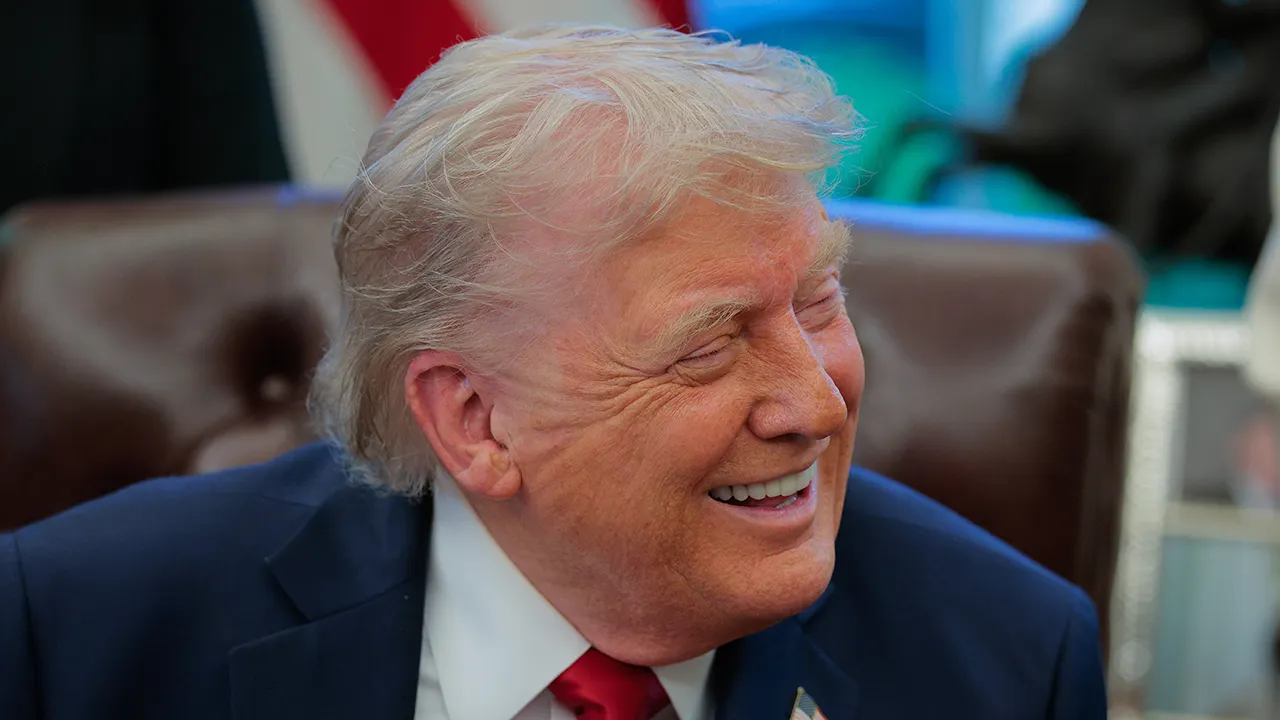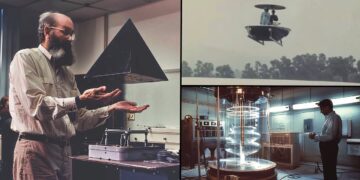And in order to fully understand what is happening right now, we must go back to the First Industrial Revolution. The First Industrial Revolution started in Britain between 1760 and 1820. It was defined as a major economic shift and according to economists, that requires three things one, a new way of communicating.
In this case, it was the fancy ability to print and use the Telegraph. Two a new transportation mechanism in this case, it was steam powered locomotives. And three, a new power source in this case, it was the burning of coal. Then came this second industrial revolution
This time it was happening in America mainly, and it started in 1870 to the early 1900. The new way of communicating was phones, radio television. The new transportation mechanism was internal combustion vehicles and the new power source was cheap oil, but of course they were still burning.
– Many people don’t want you to know this, but you are in fact living through a third industrial revolution. The new way of communicating is the internet the new way of getting around is hybrid and electric vehicles and the new power source is solar wind and nuclear.
But since 2016, the top five oil companies have spent a billion dollars trying to confuse everybody about these new power sources. And it kinda makes sense because in the last 10 years, they made $900 billion of profit. In 2019, they only spent 3% of their $115 billion capital investment in low carbon alternatives.
This is just that a power grid based off of renewables, isn’t feasible or is too expensive or would hurt the economy. But what if I told you that as of November 2018, everything changed. This is the moment when renewable energy such as wind and solar became cheaper and more efficient than fossil fuels.
For example, in 1977, the cost of photovoltaic cells for solar panels was $76 now it’s only 50 cents. This is all well fossil fuel energies have reached their peak efficiency. Chemical engineers and scientists agree that fossil fuels have matured with little potential left to exploit, whereas wind and solar continue
To become more efficient each year. Sorry, bud you’re old. Now the sentiment’s 470 exajoules of energy to earth every 88 minutes, which is the amount of energy that all of us combined use in one year. If we grabbed 1/100 of the energy that the sun emits,
It would give us six times the energy we now use across the global economy. If wind farms grabbed just 20% of the wind that currently blows, it could power eight times the current global economy. – These facts are pushing the whole world to shift into the third industrial revolution.
And if the first and second were spearheaded Britain and America, it seems that the third is being spearheaded by the European union and China. In 2017, 45% of global total investment in renewable energy was from China. China plans to get 62% of their energy, from renewable sources in 30 years,
Europe currently gets 18% of electricity from solar and wind, but some specific countries are completely committed to pushing these numbers much further. Germany announced that over the next 20 years, they are going to completely phase out coal. And in order to do this,
They are going to invest $40 billion in coal cities in order to retrain workers and keep those local economies strong. And Germany has a lot of coal factories they currently get one third of their energy from coal. They understand that moving away from this energy source is gonna be a huge challenge,
But they realize it is an important thing to do in order to be a competitive commercial country, in the future. – On top of this 18 countries, including China, India, France, the Netherlands and Ireland have announced their intention to phase out the sale and registration of vehicles that are powered
By fossil fuels over the next decade. The bank of America projects that 40% of all car sales by 2030 will actually be electric. A big reason for the steep incline in electric car sales, is the rapidly declining price of lithium batteries, which cost $1,000 per kilowatt hour in 2010
But by the end of 2017 were only $209 per kilowatt hour, a 79% plunge in price in just seven years. The average density of electric vehicle batteries is also improving at a rate of about five to 7% each year. According to Bloomberg new energy finance, by 2025, electric vehicles will constitute 19%
Of all passenger vehicle sales in China, 14% in the EU and 11% in the US. – There are still a lot of negative environmental impacts of lithium batteries. And with electric cars, if you are charging your car, using a grid that is powered by fossil fuels,
Then that electric car becomes a lot less green. This brings us to a big point of contention in these conversations, which these oil companies spent a lot of money to confuse us, me, you about. And that is how are we gonna build a grid that powers our society based
On just wind solar and nuclear. And this part is juicy, juicy, juicy, Oh boy, Oh boy, Oh boy, (laughs) Scientists and engineers are very, very shook on this one. – One of the most interesting solutions to this grid problem comes down to our very best friend the internet.
Known as the internet of things, a future smart grid could connect power sources, computing devices, and everyday objects in order to all collaborate and work together to become the most efficient power grid possible. The grid becomes incredibly efficient by sharing information and storing energy from wind solar, hydro and nuclear.
A really cool local example of this is wind farms that use smart technology. So when there’s hundreds of wind turbines, they’re working on their own, they’re actually communicating. They’re suggesting how each individual one is affecting the wind, and how they can optimize as a group, as opposed to as individuals,
To be as efficient as possible. Now imagine this on a way bigger scale, an entire country’s power grid communicating in order to optimize itself. In America new studies show that using the internet of things grid model to connect renewables, can increase energy efficiency by 60% over the next 20 years.
And now is the time to do it in America because the continued deterioration of your country’s infrastructure, could result in $7 trillion lost in sales and jobs by 2025. The American society of civil engineers gave the current public infrastructure of America a D plus, when I used to get that mark my perfectionist,
But would cry. The cost of a nervous system that would connect America to live off of renewables will be complex and expensive. But public opinion polls show that Americans support more federal state and local funding to improve infrastructure. – Okay, So how do we pay for this?
This is definitely an area of hot debate I can already hear the tipty tap ties of everyone having an opinion on this okay that is fine, there is no correct answer right now. But after reading books and studies and listening to a lot of experts, we’re gonna go over some options
And talk about a few numbers. If a 70% tax were put on the super rich in America, it would bring in between 72 to $170 billion per year. This is a tax on people who make more than $10 million per year. And again, this 70% tax, is only on the money
That they make over $10 million. I know that people freak out about this idea on Twitter. I think a lot of it has to do with the thought that maybe taxing these rich people is going to slow down the economy but history shows that between the 1950s and sixties,
When the US had super high marginal tax rates between 70 to 92%, the actual American economy at the time was defined as having strong growth that’s kind of hot, (sighs) Like America okay, you need to tax the rich, (laughs), okay. Then 2018 60 of America’s top corporations paid $0
In federal income tax, that’s insane, (laughs), okay Amazon didn’t pay any federal income tax in 2018, even though they had $11.2 billion in profit. If you were an American paying taxes in 2018, you yourself paid more tax than Amazon. I know we’re picking on America right now,
But you do have extremely wealthy corporations and you don’t seem to like to tax them. Zooming out to look at the world, in 2015, all fossil fuel companies, received $5.3 trillion in post tax subsidies. It is a confusing statistic, but essentially it means that your government and your tax paying money, actually had
To go to funding these rich corporations. Okay I need to say this now, this is a point where you can get involved we need to be voting for politicians who are going to tax the rich. Because the eight richest individuals in the world, have more money than half of the world combined.
I don’t know how else to describe this other than like not cool. We also have to vote for politicians who listen to scientists, and understand the environmental and economic negative impacts of continuing to subsidize fossil fuel companies. This means voting for politicians who are open
To making carbon taxes that make fossil fuels more expensive were also rewarding green innovation. Building out renewables is gonna create new jobs, which brings us to another point of contention in these arguments and in this discussion, which is about jobs because, if you work in the fossil fuel industry
With climate change coming and shifting the economy, you’re gonna have to end up losing your job. – To start a conservative estimate, found that jobs in wind, solar and nuclear, already outnumber fossil fuel jobs by a rate of three to one. But the devastating truth is that people
In the fossil fuel industries will lose their jobs, which is why it’s so important to help transition them, but keep them in the energy sector. These jobs might include building new batteries that are more efficient and can hold energy longer for solar and wind, or the construction of more efficient nuclear power plants.
– In Canada there’s a group of oil workers called Iron and Earth who are calling on the Canadian government to help retrain laid off oil workers, to put solar panels on top of buildings, starting with public buildings like schools. In Germany they incentivize people by subsidizing green energy and solar energy
By using tax subsidies. This created new industries and now a lot of early adopters are actually making money by selling energy back to the grid. In China Henergy is a company that leads the world in thin solar powered material. They make backpacks and umbrellas and a range of items
That allow you as an individual to carry the sun’s energy with you and like charge your phone. And this specific industry employs 3.8 million people. And finally, in Texas, many people have second incomes from their wind farms because Texas is windy AF, it is pretty much like the Saudi Arabia of wind.
Now let’s chat COVID, as most of this information on energy is from before this current global pandemic The pandemic has contracted the economy, which means that by the end of 2020 CO2 emissions will likely be 8% less than in 2019. A decrease of 128 gigatonnes of CO2
In the atmosphere, compared to if there was no pandemic at all. This is the biggest annual decrease since world war II. This may seem like good news, but looking at this graph of CO2 emissions, every down tech is an economic crisis that is followed by a steep increase in CO2 emissions.
But looking at the 2008 financial crisis we see after there was a long period of flattened emissions. One reason is because 15% of the global stimulus after that financial crisis went into developing and deploying green technologies. We have to do this again now, as we get out of the economic crisis.
To do this, we need to create jobs in wind and solar in the US at the beginning of 2020 250,000 people were working in solar. We need financial incentives that help them get back to work. Infrastructure, construction jobs for the grid, as well as the internet of things, building energy,
Retrofits of buildings and public transportation jobs we’ll get people back to work fast. We need programs that retrain and justly move workers out of conventional coal industries into new green alternatives. This will save the inevitable disappearance of their jobs in coal, and also help the environment.
During COVID the US Mexico and South Africa, have relaxed, laws, controlling pollution standards, vehicle efficiency, and even in the US, they rolled back fuel economy rules to commit the nation to higher transport emissions, which doesn’t make any sense scientifically, politically or economically. So get ready to vote
You will say it now and say it again. We need to vote for politicians who believe in science and who use scientific literature to build policy. This is how we catalyze political action to understand that a respect for science will protect us against the biggest threats to our societies,
Such as pandemics and the biggest one that is already here and will only be getting worse in the future. And we need to be paying attention to, and that is climate change.

































 Reaction & Commentary
Reaction & Commentary










